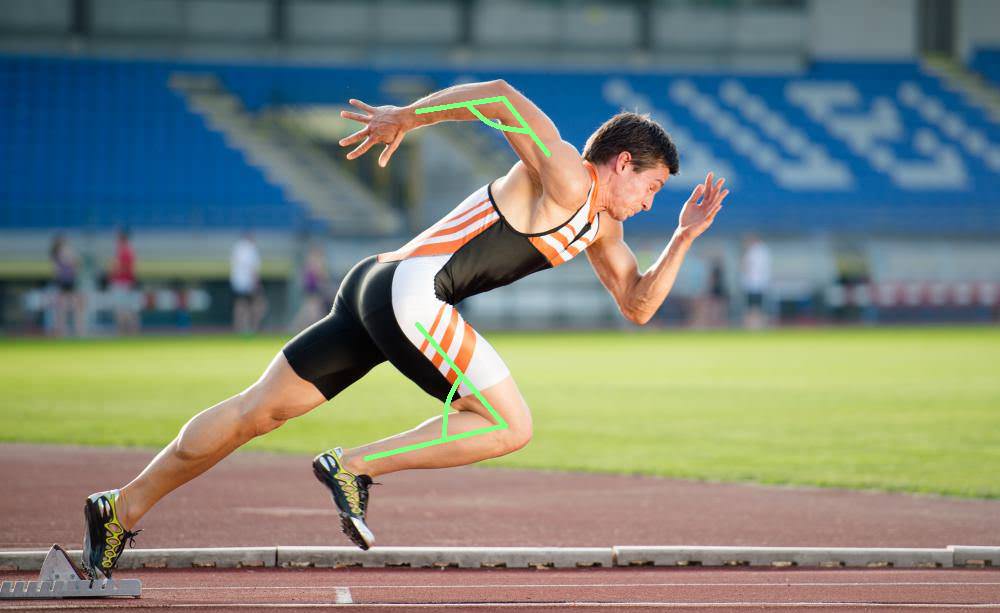
Three Common Sprinting Mistakes
Coaching speed is something I became very passionate about because I believe that speed is the foundation of athleticism. Whether you are a multi-directional sport athlete or a track athlete, fine-tuning your running mechanics will significantly improve your overall athleticism. Thinking back, I can’t recall any of my gym teachers or coaches taking the time to teach running mechanics. Maybe the same is true for you. It was always just “GO GO GO” without any concrete teaching. If the performance was unsatisfactory in their eyes, they would just yell “run faster” or “work harder” instead of breaking down and correcting any technical flaws. Faulty movement patterns become habit over time and if errors are never addressed, the hole only gets deeper to climb out of. Having worked with many young athletes over the past five years, I can promise you that improper technique is extremely common. My first job is to make the athlete aware of his/her mistakes in a non-discouraging way. Once they become mindful of what the issue is, we start corrective drills. The three most common mistakes I see are poor running posture, faulty arm action, and improper leg cycling.
There are several components of speed to train. Some examples include linear and lateral acceleration, linear and lateral deceleration, change of direction (agility), top-end-speed (max velocity), cutting, etc. Before prioritizing any of these skills over others, it’s important for me to see how the athlete naturally runs. This way if I notice some issues, I can address them before going into more sport-specific drills.
Mistake # 1 – Poor Running Posture
Assessing an athlete’s body alignment when sprinting is critical. It’s important to teach proper body angles during both acceleration and top-end-speed. Speed coaches should explain to their athletes the difference between the two. In terms of sprinting posture, I’m not devoting all of my focus on what the limbs are doing just yet. Instead, I’m watching the pelvic and thoracic region. If the core cannot latch onto the pelvis and keep it stable, that tells me we have some core strengthening to do. To see some drills you could try to help correct sprinting posture, check out this video:
Mistake #2 – Faulty Arm Action
Poor arm action is also very common in young athletes. When they’re told to run, their arms might be the last thing they’re thinking about. It’s crucial getting them to understand just how much their arms can impact their speed. For instance, a point I like to get across early on is that a coordinated, aggressive shoulder “punch” can really help get someone going in acceleration. From there, proper arm action will aid in maintaining a smooth, synchronous rhythm. Some common things I see are arms flaring out to the side, arms over-extended and/or legging behind or “too much arms, not enough shoulders.” Check out these videos to help correct faulty arm action.
Mistake #3 – Improper Leg Cycle
When we sprint, we put considerable force into the ground with one leg, then that same leg must be able to recover and cycle through efficiently in order to prepare for the next stride. Once an athlete learns how to do this properly, they will be running faster in no time. Check out these videos to learn how to work on leg cycling.
Michael has been a strength coach at Olympia Fitness and Performance for three years. Michael graduated from Rhode Island College where he studied Community Health & Wellness with a concentration in Wellness & Movement studies. After graduating, Mike went on to get his CSCS (certified strength and conditioning specialist) through the NSCA. He is also a Certified Speed and Agility Coach, as well as a TPI certified coach. In his three years as a strength coach, Mike has helped clients from all walks of life improve their fitness levels. He has a strong passion for helping young athletes not just improve their athletic performance, but also helping them build confidence.
Sources
Taft, Lee. Certified Speed and Agility Course. 2018 National Sports Performance Association (NSPA).

